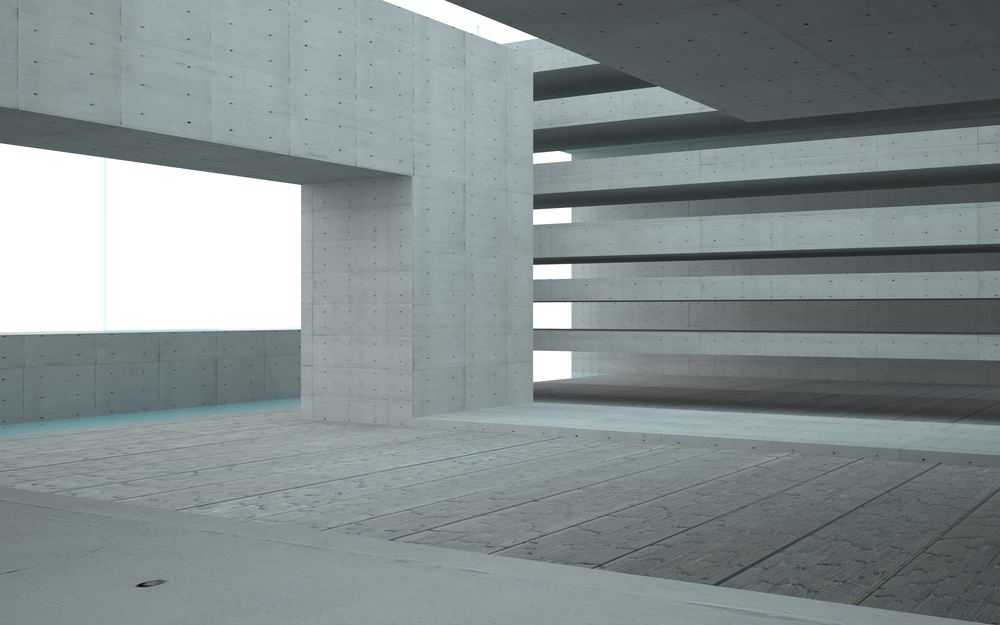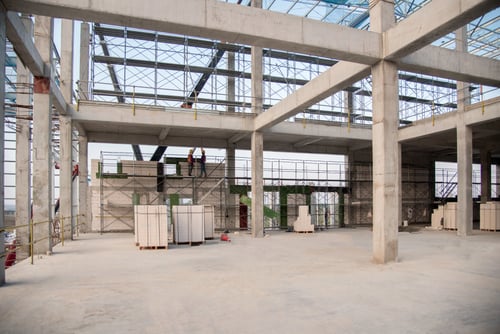How Can Concrete Construction Be Greener?

Concrete is produced from the mixture of cement, aggregates and water. Aggregates make up from 60 to 80% of the concrete mix, providing compressive strength and bulk. Aggregates are divided in two categories, coarse and fine aggregates, depending on the diameter of particles.
Some of the most common aggregates are crushed stone, gravel and sand. Other less common aggregates are the following:
Lightweight aggregates: These materials are divided into three groups - natural resources (permite, vermiculite, clay, shale, and slate), industrial products (glass), and industrial by-products (fly ash).
Recycled concrete: It is created by breaking and tearing down existing concrete to a defined size. Consider that recycled concrete requires certain measures to ensure the quality of the mixture.
- Recycled concrete has a higher absorption rate and a lower specific gravity than natural aggregate.
- The chloride content of recycled aggregates is of concern, since it can cause chemical reactions that weaken concrete.
Implement green construction practices in your next building project.
How Does Concrete Construction Affect the Environment?
The construction industry is aware of the environmental impact of cement and concrete production, creating the need to develop greener concrete. When discussing the concrete supply chain, it is important to consider every step, from obtaining aggregates to producing cement.
- Cement production results in high levels of CO2 output.
- It is the third-ranking source of man-made CO2 in the world, after transportation and energy generation.
- 4 to 5% of worldwide CO2 emissions come from cement production.
- Of the total CO2 output, 30% comes from energy used and 70% from decarbonation.
CO2 is produced during two steps in cement fabrication:
- As a result of burning fossil fuels during the cement-making process.
- From thermal decomposition of calcium carbonate while producing clinker.
The extraction and processing of raw materials for concrete has several negative effects: landscape degradation, dust, noise, visual pollution, loss of agricultural land, and significant water consumption to clean aggregates and to manage dust.
Making the Concrete Industry Greener
The concrete industry requires improvement, through innovations and product standards that help reduce the environmental impact. The main opportunity areas to make the concrete industry greener are the following:
- Reducing greenhouse gas emissions.
- Reducing the use of natural resources such as limestones, shale, clay, natural sand and rocks.
- Reusing waste materials in concrete to reduce pollution.
Green concrete is defined as concrete that uses waste material for at least one of its components, or concrete with a production process that does not cause environmental destruction. Green concrete should also offer high performance and life cycle sustainability. When developing cleaner technologies for concrete production, the main targets are the following:
- Reduction of CO2 emissions.
- Reduction of energy consumption from fossil fuels in cement manufacturing.
- Reduction of chemicals that can affect health or the environment.
- Substitution of cement in concrete mixture with alternatives such as fly ash.
- Improvements in technology to recycle concrete and cement.
- Using alternative aggregates.
- Regulations to promote the use of green concrete.
Green concrete is very similar to conventional concrete, but its production requires less energy and causes less harm to the environment. There are key factors to determine if concrete is green:
- Amount of portland cement replaced with other material
- Manufacturing process
- Performance and life cycle sustainability impacts
The main strategy for reducing CO2 emissions has been by replacing a percentage of cement with a viable substitute.
Cement Substitutes

As mentioned before, cement production requires a great amount of energy and produces a large amount of CO2. Finding substitutes for cement in the concrete mixtures, especially waste product, makes environmental sense.
The concrete industry uses significant amounts of industrial by-products to supplement a portion of cement, and these products are called supplementary cementitious materials (SCMs). Some cement substitutes are listed below.
Pulverised Fuel Ash or “Fly ash”
Fly ash is a by-product of coal-burning power stations. Coal is pulverised into powder before being burned, and the ashes are recovered and used as cement substitute.
- Fly ash is combined with portland cement in percentages from 10-20%, but cannot be used by itself - it relies on the water and lime from cement to hydrate.
- Since renewable energy sources have gained popularity in recent years, coal-burning power stations are being phased out. This reduces the availability of fly ash.
Ground Granulated Blast-Furnace Slag (GGBS)
GGBS is a by product of the iron and steel industry. It is obtained by quenching molten iron slag from a blast furnace in water or steam, producing a glassy and granular product that is dried and ground into a fine powder.
- GGBS is used in combination with portland cement in the range of 40 to 90%, since both are chemically similar.
- Concrete made with GGBS takes more time to set than ordinary concrete, depending on the amount used, but it continues to gain strength over a longer period of time.
Silica Fume
Silica fume is a by-product from processing quartz into silicon. It is a fine powder that significantly increases strength and durability of concrete when combined with cement. Silica fume is used in high-strength concrete, or concrete subject to aggressive environmental conditions.
Limestone Fines
Limestone fines are powders obtained from limestone processing. They can be added to portland cement as an additive, and they are less reactive than fly ash and GGBS.
Environmental Practices in Concrete Production
The following are some ways in which construction companies and concrete suppliers can reduce their environmental impact:
- Reusing and recycling waste products from concrete manufacturing, such as water and unused returned concrete.
- Incorporating other by-products. Some examples are foundry sand, post-consumer glass, wood ash and other materials that would typically end up in landfills.
- Switching from fossil fuels to renewable energy for the production and transportation of concrete.
- Improving technologies that use of concrete debris as aggregate, to conserve natural resources and optimize landfill capacity.
Main Barriers for Green Concrete
- Construction business practices: The building industry's profitability is usually determined by fast construction, not necessarily by life-cycle cost savings from energy efficiency and materials conservation. It is important to know that fast construction is often more expensive, and poorly-designed buildings need frequent reparations.
- Building codes: Codes need to include and promote the use of recycled materials, explaining standards for performance.
- Engineering education and research must be interconnected: For green concrete to replace conventional concrete, the entire concrete construction industry must be shifted to a greener approach.
Recommendations for Sustainability in the Construction Industry
Design, planning and project management are all important factors that determine the outcome of a construction project. These can be combined with specific measures that optimize the amount of concrete used, while integrating alternative materials.
- Consume less concrete in building projects, through innovative architecture and structural design.
- Optimizing concrete mixture dosifications.
- Using blended portland cement, with high volumes of supplementary cementitious materials.

Anuj Srivastava
Anuj Srivastava is a principal partner at NY Engineers. He is known for his MEP franchise market knowledge. Anuj is currently leading a team of 100+ MEP/FP engineers and has successfully led over 1500 franchise projects in the US.
Related Posts
Join 15,000+ Fellow Architects and Contractors
Get expert engineering tips straight to your inbox. Subscribe to the NY Engineers Blog below.



